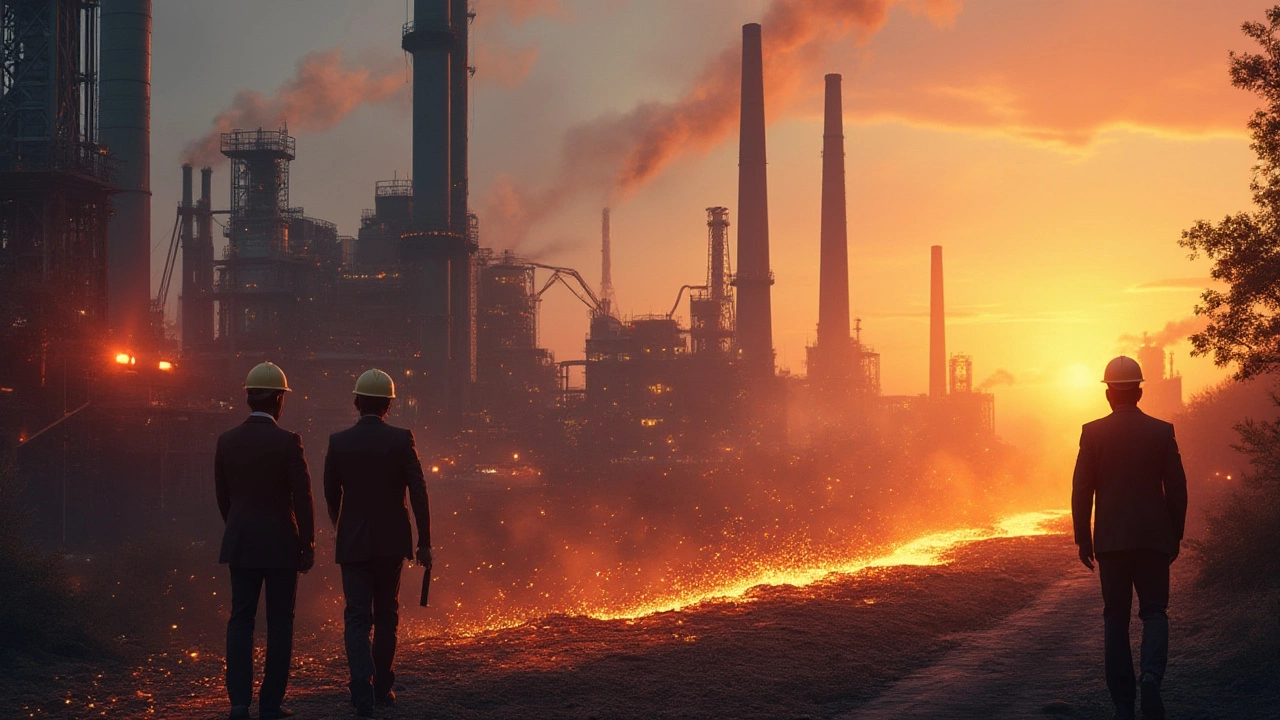- Discovering the Priciest Wood for Indian Furniture Feb 3, 2025
- Plastic Exporter Number One: Who Tops the Global List? May 29, 2025
- Furniture Import Costs from India: What You Really Pay Jun 18, 2025
- Most Popular Small Business in Manufacturing: What's Leading the Pack? Mar 16, 2025
- Indian Textile Industry Collapse: What Really Happened and What It Means for Manufacturers Apr 23, 2025
US Steel Industry: Current Landscape and Future Outlook
When you think of steel in America, the first name that comes to mind is usually Pittsburgh. The city earned the nickname ‘Steel City’ for a reason, but the story doesn’t stop there. Today the US steel industry is a mix of old‑school plants and high‑tech mills, all trying to stay competitive in a market that’s shifting fast.
Major US Steel Production Centers
Pittsburgh still hosts a big chunk of the nation’s steel output, but you’ll also find huge operations in Indiana, Ohio, and Alabama. These regions share a few things: access to raw materials, a skilled workforce, and a network of rail and port facilities that keep the supply chain moving.
For example, the Indiana Harbor plant can produce more than 8 million tons of steel a year, feeding auto manufacturers and construction firms across the Midwest. In Alabama, the Port of Mobile offers a direct line to overseas markets, making it a hotspot for both domestic and export orders.
Challenges Facing the US Steel Industry
One of the biggest headaches right now is competition from cheaper imports, especially from countries that can produce steel at lower cost thanks to cheaper labor and fewer environmental rules. That’s forced many US mills to tighten margins and look for ways to cut waste.
Environmental regulations are another hurdle. The industry has to meet stricter emissions standards, which means upgrading furnaces, investing in carbon‑capture tech, or even switching to electric arc furnaces that use recycled scrap instead of iron ore. These upgrades are costly, but they also open doors to new funding and incentives.
Labor shortages add to the pressure. Skilled welders and operators are in short supply, so companies are turning to automation and on‑the‑job training programs to keep their lines running smoothly.
Despite these challenges, there are clear opportunities. Advanced high‑strength steel is in demand for lightweight vehicles and wind‑turbine components. Companies that can produce these specialized grades are seeing better prices and steadier orders.
Reshoring also plays a role. With global supply chains proving fragile, many manufacturers prefer US‑made steel for its reliability and shorter lead times. This trend benefits mills that can deliver consistent quality on time.
In short, the US steel industry is at a crossroads. Plants that adapt to greener tech, invest in skilled talent, and focus on high‑value products are the ones likely to thrive. If you’re watching the market, keep an eye on how these shifts play out – they’ll shape the next decade of American steel.
Biggest Steel Supplier in the US: Market Leaders, Facts, and Industry Tips
- Aarav Sekhar
- Jul 30, 2025
Uncover the biggest steel supplier in the US, how they lead the market, and what shapes America's steel industry today. Dive into stats, facts, and tips for buyers.
